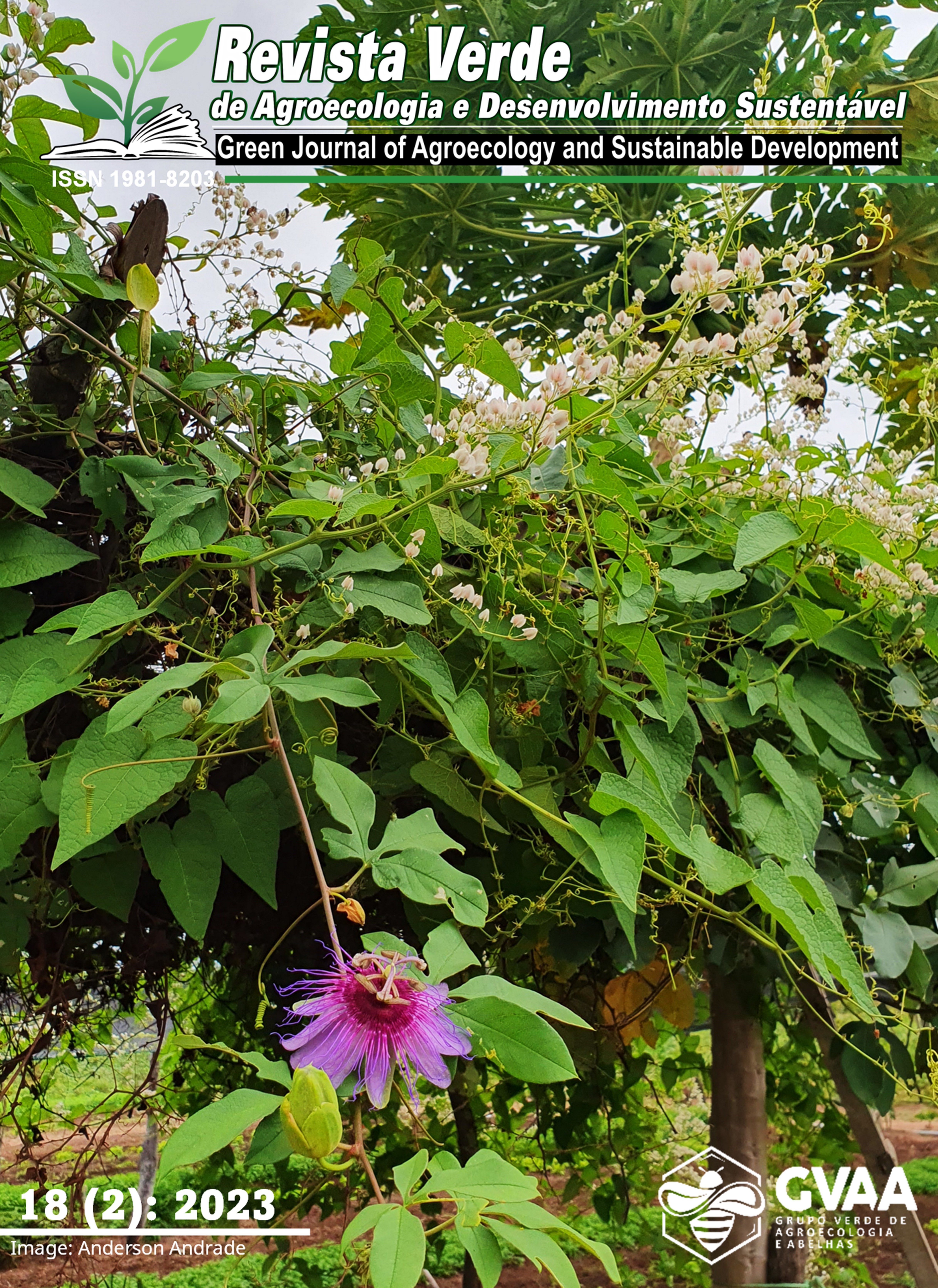Biometrics of neonates and characterization of the Amazon Turtle (Podocmenis expansa) nests in the Crixás-açu river, Mundo Novo, Goiás, Brazil
DOI:
https://doi.org/10.18378/rvads.v18i2.9456Keywords:
Neonates, Vegetation, HatchingAbstract
The objective of this study was to evaluate newborn biometrics and characterization of Podocnemis expansa turtle nests in the Crixás-Açu rivers, municipalities of Mundo Novo, Goais, Brazil. It consists of evaluating the newborns and the characterization of the nests after hatching. There was no statistical difference between eggs with oil, predatory nests, dead newborns, un hatched eggs, shell (total number of eggs counted within a nest), as well as hatching and survival rates for the distance of 30 meters from the river course. Animal weight, hoof length, hoof width, plastron length, plastron width or number of shields were obtained statistically significant considering the same fixed distance of 30 or greater than 30 meters from the river bank. In the eggshell analysis, there was a statistical difference regarding the amount of the element "Carbon" found, unlike the samples of pH, "phosphorus", "potassium", "hydrogen", "aluminium", "calcium", "magnesium" and matter. Organic. As for the particle size analysis of the sand extracted from the nests, there was a statistical difference in two sizes; 1 and 2 millimeters. This study shows that nests near vegetation are more successful in hatching.
Downloads
References
BUSTARD, H. R.; GREENHAM, P. Physical and chemical factors affecting hatching in the green sea turtle, Chelonia mydas (L.). Ecology, 49(2): 269-276. 1968. https://doi.org/10.2307/1934455
CASTRO, P. T. A.; FERREIRA JÚNIOR, P. D. Caracterização ecogeomorfológica das áreas de desova de quelônios de água doce (gênero Podocnemis) no entorno da ilha do bananal, Rio Araguaia. Geografias, (4), 15-22. 2008. https://doi.org/10.35699/2237-549X..13247
CANTARELLI, V. H.; MALVASIO, A.; VERDADE, L. M. Brazil’s Podocnemis expansa Conservation Program: Retrospective and Future Directions. Chelonian Conservation and Biology, 13(1): 124–128, 2014.
COSTA, H. C.; GUEDES, T. B.; BÉRNILS, R. S. Lista de répteis do Brasil: padrões e tendências. Herpetologia Brasileira, v. 10, n. 3, p. 110-279, 2021. https://doi.org/10.5281/zenodo.5838950
CRESPO, A. A. Estatística fácil. São Paulo: Saraiva. 2002.
EMBRAPA, Empresa Brasileira de Pesquisa Agropecuária. Manual de análises químicas de solos, plantas e fertilizantes. Rio de Janeiro: Centro Nacional de Pesquisa de Solos, 2009.
FERREIRA-JÚNIOR, P. D.; CASTRO, P. T. A.; ADDAD, J. E.; LORENZO, M. D. E. Aspectos fisiográficos das áreas de nidificação da tartaruga marinha Carettacaretta na praia da Guanabara, Anchieta, Espírito Santo. Publicações Avulsas do Instituto Pau Brasil, (7):1-16, 2003.
FERREIRA JUNIOR, P. D.; CASTRO, P. T. A. Geological characteristics of the nesting areas of the giant Amazon river turtle (Podocnemis expansa) in the Crixás-Açu river in Goiás State, Brazil. Acta Amazonica, (36):249-258. 2006. https://doi.org/10.1590/S0044-59672006000200015
FERREIRA JÚNIOR, P. D. Efeitos de Fatores Ambientais na Reprodução de Tartarugas. Acta Amazonia. 39, (2):319 – 334. 2009. https://doi.org/10.1590/S0044-59672009000200011
FOLEY, A. M.; PECK, S. A.; HARMAN, G. R. Effects of sand characteristics and 544 inundation on the hatching success of loggerhead sea turtle (Caretta caretta) clutches on 545 low-relief mangrove islands in southwest Florida. Chelonian Conservation and Biology. 5, (1):32-41. 2006. https://doi.org/10.2744/1071-8443(2006)5[32:EOSCAI]2.0.CO;2
IBAMA, Instituto Brasileiro do Meio Ambiente e dos Recursos Naturais Renováveis. Programa quelônios da Amazônia – PQA. 2022. Disponível em: https://www.gov.br/ibama/pt-br/assuntos/biodiversidade/fauna-silvestre/quelonios-pqa; Acesso em: 30 de novembro de 2022.
LIMA, J. P. Aspectos da biologia reprodutiva de Podocnemis expansa Schweigger 1812, Podocnemis sextuberculata Cornalia, 1849 e Podocnemis unifilis Troschel, 1848 (Testudines, Podocnemididae) na reserva biológica do Abufari, Amazonas, Brasil. Manaus: Instituto Nacional de Pesquisas da Amazônia. Dissertação de Mestrado em Ecologia. 2007.74p.
NAVARRO, R. D.; ALVES, A. C. T. L. E. Neonatal biometry and characterization of Amazonian Turtle nests (Podocnemis expansa). Acta Scientiarum: Biological Sciences, 43, 505-91, 2021.
POUGH, H. F.; ANDREWS, R. M.; CADLE, J. E.; CRUMP, M. L., SAVITZKY, A. H.; WELLS, K. D. Herpetology, 3rd edn. Prentice Hall: Upper Saddle River, 2003.
SALERA JUNIOR, G.; MALVASIO, A.; PORTELINHA, T. C. G.; Avaliação da predação de Podocnemis expansa e Podocnemis unifilis (Testudines, 52 13 Podocnemididae) no rio Javaés. Acta Amazonica, 39(1): 207-213, 2009.
SOUZA, F. L, Uma revisão sobre padrões de atividade, reprodução e alimentação de cágados brasileiros (Testudines, Chelidae). Revista Phyllomedusa,3, 1,15-27. 2004.
RODRIGUES, R. M. Quelônios. In: A fauna da Amazônia. Belém: CEJUP, 1992. 209- 214 p.
Downloads
Published
How to Cite
Issue
Section
License
Copyright (c) 2023 Rodrigo Diana Navarro et al.

This work is licensed under a Creative Commons Attribution 4.0 International License.















